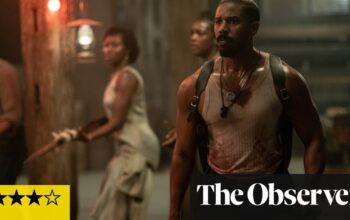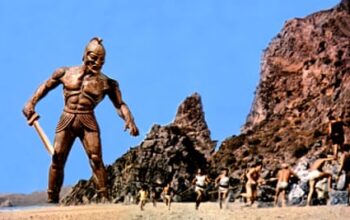Y
At the age of 82, one might assume that esteemed Japanese anime director Hayao Miyazaki has released his final film. However, after the more realistic approach of his 2013 film The Wind Rises, which explored pre-World War II Japan for artistic inspiration, Miyazaki has returned to full-fledged fantasy with his latest work, The Boy and the Heron. It is easy to see the Great-Uncle character in the film, who is searching for a successor to manage a world of man-eating parakeets and flying dim sum, as Miyazaki’s own “Prospero moment” – a symbolic breaking of his creative staff. But then you remember: this is the fourth time he has declared his retirement.

Miyazaki is not the only one who has been tempted to come out of retirement for “one last job” in his later years. At the age of 86, Ridley Scott not only directed a film about Napoleon Bonaparte, but also managed to stir up controversy during the press tour. This marked his ninth movie since 2010, an impressive feat for his late career, with plans for a Gladiator 2 in the works for next year. At 81, Martin Scorsese has just released Killers of the Flower Moon, a new take on his famous gangster epics. 93-year-old Clint Eastwood continues to be a shining example of hard-working Americans, now on his 40th directorial project, Juror No 2. Even a global pandemic couldn’t stop Woody Allen’s streak of releasing a film every year from 1982 to 2020 (with one exception in 2018). At the age of 88, he is still going strong. Despite his age and ongoing controversies, Roman Polanski, 90, remains active in the film industry.
Despite the challenges of aging and facing declining physical abilities, many directors continue to thrive in their demanding roles. However, only a select few, whether due to genetics or sheer determination, are able to maintain this level of intensity well into their 70s and even beyond, with some, like the late Portuguese filmmaker Manoel de Oliveira, reportedly working on new projects at the age of 106. While people are staying active for longer in their later years, there are still limitations. At 87 years old, Ken Loach released his latest film “The Old Oak” this year and acknowledged that he may be reaching his limit: “Your abilities do decline. Your short-term memory decreases and my eyesight is not as sharp, making things more challenging.”
Another school of thought argues that just because you are able to do something, doesn’t necessarily mean you should. Renowned filmmaker Quentin Tarantino has publicly stated his plan to retire from directing after making 10 movies, in order to avoid tarnishing his impressive filmography with any subpar works later in his career. In 2012, he famously stated, “I do believe that one of those out-of-touch, old, weak, and unimpressive movies costs you three good movies in terms of your reputation.”

Most movie directors retire before they turn 70, due to the changing standards and preferences of studios. Only a few have the opportunity to shape their own legacy, like Tarantino who is deeply immersed in the film industry. However, the ultimate judgement of their work lies in the hands of others, no matter how many films they produce. Allen may not be the most exciting filmmaker in his later years, but at least he has a practical attitude towards his lasting impact. When asked in 2015 how he wants to be remembered, he replied that he doesn’t care much and it wouldn’t make a difference to him, except for the royalties his children would receive. He even compared it to standing at Shakespeare’s grave and singing his praises, saying that it ultimately doesn’t matter because he is no longer alive.
Eastwood shares a similarly unromantic perspective on directing well into his 90s: “I simply enjoy it.” However, his later works demonstrate a deeper engagement with the world compared to Allen’s, exploring the concept of modern heroism in films like American Sniper and The 15:17 to Paris. He is praised for consistently completing projects within budget and on schedule, exemplifying a type of “late style” characterized by a minimalist classicism. At this stage in life, there is no point in wasting time. Scorsese, who was once known for flashy stylistic choices, has also acknowledged this shift: “Do I need to prove that I can execute a beautiful camera move, like in Goodfellas? Well, I did it. Do it again? Hmm, no. It’s not worth it. That was good for that moment.”

The intriguing aspect of this group of older individuals being able to extend their professional lives is the potential for their art to gain a new sense of boldness – similar to David Bowie’s last album, Blackstar. In his film The Irishman, Scorsese directly confronts mortality and condemns the glorification of gangster culture. However, Killers of the Flower Moon takes a more daring approach in its examination of the roots of violence and exploitation, acknowledging that even those involved may not fully comprehend their actions. Even the director’s role as a radio host dramatizing the Osage murders suggests that even those who tell the story may have played a part in the events.
Scott has a tendency to rewrite history as he nears the end. Napoleon shares similarities with 2021’s The Last Duel, challenging traditional narratives of power and dominance by heavily emphasizing that Napoleon was merely controlled by Josephine. The film takes on a comedic tone, portraying significant historical events as mundane domestic affairs, similar to Scott’s previous work House of Gucci. By rejecting the accepted version of events, Scott may also be poking fun at the self-importance and arrogance of all forms of storytelling, including his own. He is essentially telling everyone, including historians who claim to hold the truth, to stop taking themselves so seriously.

He should be aware. Maybe Scott, the former advertiser often ridiculed for his focus on visuals rather than substance, has become more introspective and honest in his later years about the role of an artist and the drive to create in the face of mortality. The film Prometheus was so consumed with these themes that it neglected to tell a traditional Alien story. Through the character of Weyland, a technocrat obsessed with meeting his “creator” and the father of the android David, Scott explored the egoism and potential for delusions of grandeur that can accompany artistic endeavors. Michael Fassbender’s portrayal of David, who despises his creator and is determined to perfect his own life form, is a haunting depiction of an artist.
Unfortunately, it is unlikely that we will have the opportunity to witness the conclusion of this modern-day story of Lucifer due to the underwhelming success of Alien: Covenant. While Miyazaki, known for his more benevolent approach, remains a guiding figure, he is also prone to getting lost in his own imaginary worlds. However, as seen in The Boy and the Heron, there comes a time when one must step down and relinquish power. In reality, the temptation to hold onto power never truly disappears. A Studio Ghibli executive recently shared that Miyazaki has been visiting the office to brainstorm ideas for a new film. Despite any potential setbacks, there is still a glimmer of hope.
Source: theguardian.com


